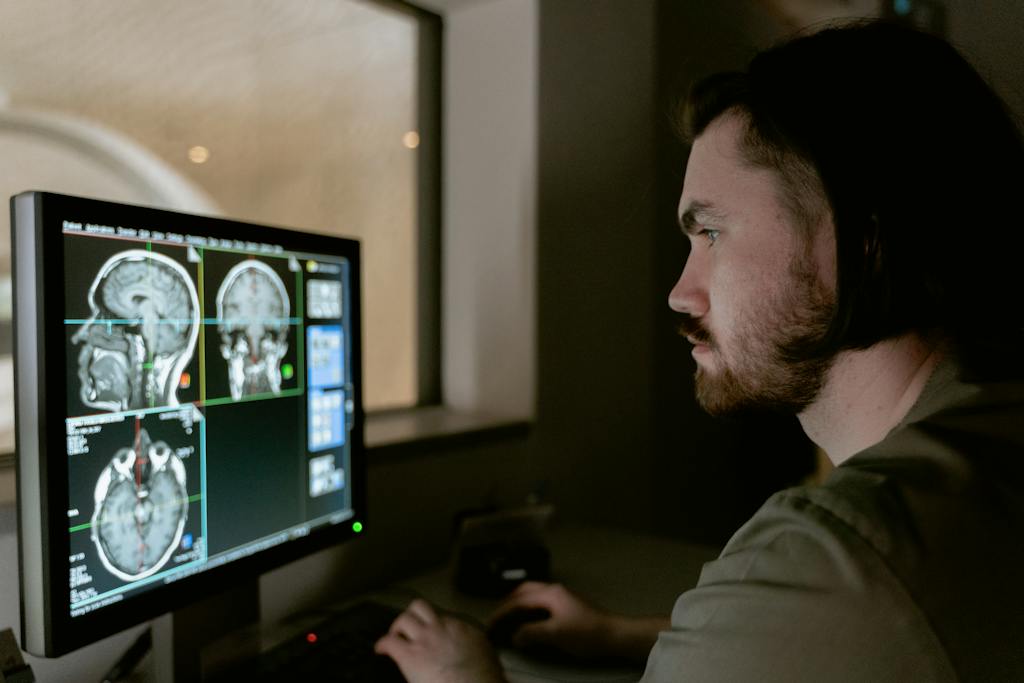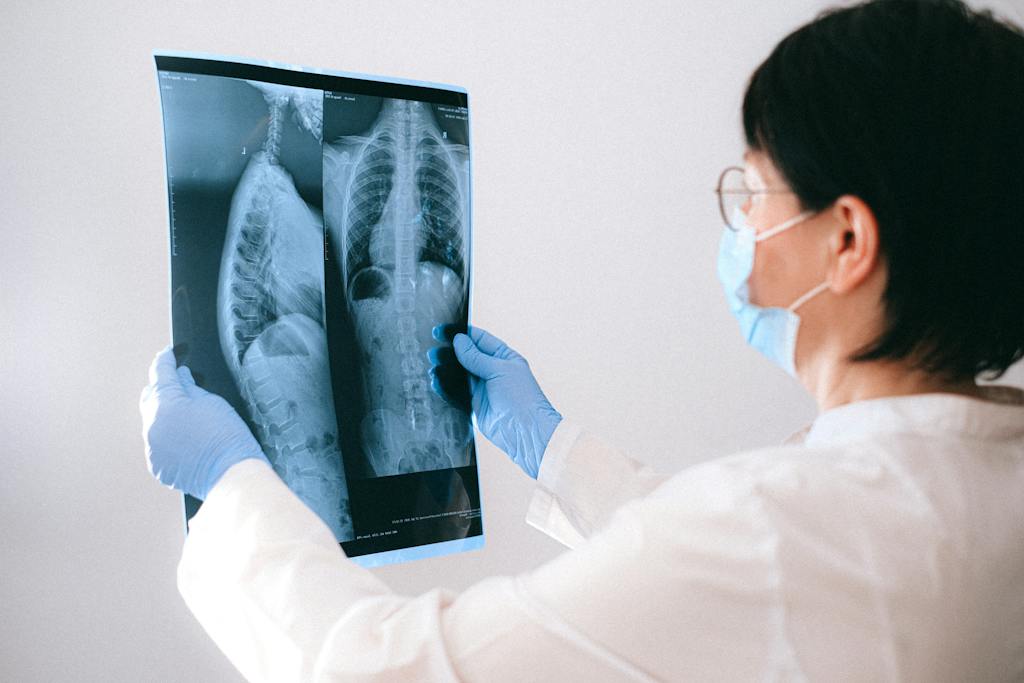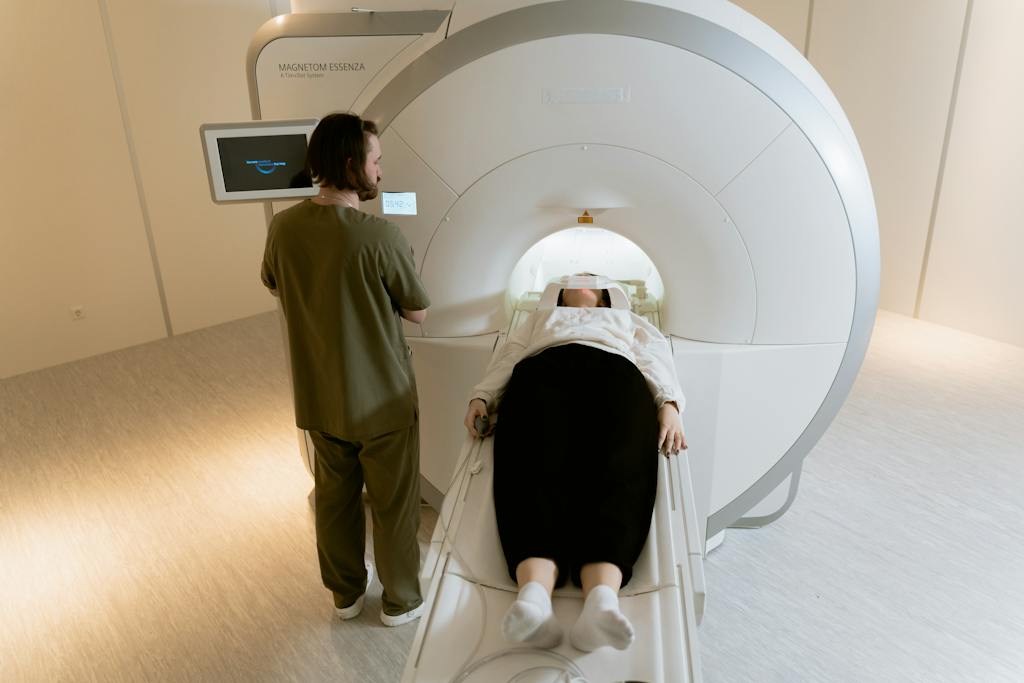What is Radiologic Technology?
Radiologic technology is the field concerned with the use of radiation, such as X-rays, to diagnose and treat diseases. It is also known as medical imaging or radiography.
Professionals in this field are called radiologic technologists or radiographers, and they specialize in using imaging technology to help physicians image the body and diagnose or treat diseases.
Radiographers both capture these images and analyze them to identify issues.They are responsible for explaining procedures, positioning patients, using and maintaining equipment, implementing radiation protection measures, and assessing image quality.
Make sure to read more to know more about radiologic technology.
Roles of Radiologic Technologists

What do radiologic technologists actually do on a daily basis? Their main roles involve the following:
Operate equipment to image areas of the body
They are responsible for appropriately positioning patients and equipment to image specific areas of interest in the body.
This requires both technical skills in selecting imaging parameters and protocols and patient care skills to properly position patients while explaining what will happen in the exam.
They also strictly follow radiation safety principles, like collimating X-ray beams and using shielding to minimize radiation exposure.
Perform diagnostic imaging examinations like x-rays, CT scans, and MRIs
During imaging procedures like CT scans or X-rays, techs give instructions to patients, monitor the imaging process, and check that quality images are obtained.
They may administer contrast agents to patients when needed to enhance visualization of internal structures for the radiologist.
Radtechs also assist physicians with special procedures like fluoroscopy, which uses a continuous or pulsed X-ray beam to view motion inside the body. Common fluoro procedures include upper GI imaging, arthrograms, myelograms, cystograms, and barium enemas.
Radtechs prepare the contrast agents, operate the fluoro equipment, and assist the radiologist during the exam.
Assist radiologists and other physicians in fluoroscopy, interventional radiography, and other procedures
Interventional procedures are another key duty, which involves guiding and imaging small instruments or devices within the body, such as stents, tubes, balloons, biopsy needles, or catheters.
Radtechs maintain sterile fields, monitor patients, and use fluoroscopic, CT, ultrasound, or MRI guidance during the procedures.
Provide patient care before, during, and after imaging procedures
Lastly, radiologic techs provide a range of direct patient care services throughout imaging exams. This includes explaining procedures, answering questions and concerns, monitoring health status, managing medications or IVs, caring for incisions or drainage tubes after procedures, and checking for adverse reactions. Their patients can feel quite anxious about undergoing imaging tests, so calm and kind reassurance is vital.

Educational Requirements
If a career as a radiologic technologist interests you, what education do you need? You would need to earn an associate’s or bachelor’s degree in the field of radiologic technology or radiography.
This would involve completing a 12-24 month accredited program in radiography. You would receive a combination of classroom education in areas like anatomy, pathology, radiation physics, imaging procedures, patient care, and safety protocols, as well as extensive clinical experience in a healthcare setting working with real patients.
Upon finishing your degree, you would then be eligible to take and pass certification examinations from the American Registry of Radiologic Technologists (ARRT) to receive your official credentials as a Registered Technologist (RT).
Types of Radiologic Equipment

Radiologic technologists operate and assist with a variety of fascinating equipment using radiation, magnetism, and soundwaves to see inside the human body. The main specialties include basic x-ray machines, CT scanners, MRI scanners, ultrasound machines, and mammography units.
Basic x-ray
Most people are familiar with general radiographic x-ray units – the oldest and still most common diagnostic imaging technique.
They consist of a tube emitting a focused X-ray beam that penetrates the body’s tissues and a detector that captures the resulting black-and-white radiographic image.
Studies like chest X-rays, abdomen films, bone scans, and joint X-rays are routine exams. Portable machines on wheelable carts are also used at patient bedsides.
CT or CAT scans
CT scanners have a rotating X-ray tube and detectors arranged in a complete circle or “doughnut” shape. The X-ray beam moves around the patient, shooting through cross-sectional “slices,” which a computer then processes into detailed 3D images. CT is excellent for viewing organs, bones, soft tissue abnormalities, trauma, cancers, and blood vessels.
MRI scans
Instead of radiation, MRI scanners utilize very strong magnetic fields and radio waves to re-align hydrogen atoms within bodily tissues. Detectors sense the signals emitted during realignment, and a computer constructs intricate images. MRI gives unparalleled soft tissue contrast for spinal, joint, neurological, tumor, and certain heart issues.
Ultrasounds
Ultrasound imaging uses high-frequency sound waves emitted from a handheld probe placed against the skin. The sound waves penetrate tissues, and any reflections bounce back to produce real-time images showing the structure and movement of organs and vessels. Obstetric, cardiac, abdominal, pelvic, and vascular exams utilize ultrasound technology.
Mammograms
Lastly, mammography units are specialized low-dose X-ray systems just for breast imaging. They consist of paddles compressing the breast tissue to acquire top and side images used for cancer screening and diagnosis.
Of course, many hospitals also have image-processing computers, archives for storage, and networks for transmitting digital images so physicians at multiple locations can access and interpret results.
Career Outlook
If a career using the latest and advanced medical technology appeals to you, radiologic technology offers bright prospects looking towards the future.
Faster than average job growth rate predicted
Job growth for radiologic technologists is actually projected to expand at a faster-than-average rate over the next decade compared to other occupations. There are a few major reasons for spurring increasing demand.
Aging population requiring more imaging procedures
Beyond the pay, being a radiologic technologist offers varied day-to-day work experiences using highly complex machinery found in a few other jobs. Every day of performing imaging studies is different.
Every patient’s condition poses unique challenges. Ongoing innovation means mastering new technologies, such as 3D mammography units. Physicians rely heavily on the high-quality images they produce, making it a meaningful medical profession.
Competitive salaries with potential specialization
The pay is also favorable compared to other technologist positions available with just an associate’s degree. According to Glassdoor, the median salary for Radiologic Techs in the USA is over $88,850 annually.
With additional specialization in areas like MRI, salaries can reach up to $110,00, especially in large metropolitan hospitals. Even beginning-level hospital positions tend to pay over $50,000 for new graduates of radiography programs.

Source: https://www.glassdoor.com/Salaries/radiologic-technologist-salary-SRCH_KO0,23.htm
Should You Pursue Radiologic Technology?
Hopefully, the main points we’ve covered have provided initial insight into the field of radiologic technology and what this career pathway entails. Should you consider pursuing it? Here is a concise summary of key reasons why radiologic technology may be a highly rewarding profession to consider
- It plays an integral role in the diagnostic process across all fields of medicine, directly impacting patient treatment through images identifying issues.
- You continually engage with fascinating, complex equipment like X-ray machines, CT scanners, MRI scanners, mammography units, fluoroscopy systems, and more. The technology is constantly evolving with advances you can master.
- The nature of the job provides new challenges daily, varying patient cases and imaging studies needing unique solutions or techniques. No shift is mundane, which keeps critical thinking sharp.
- Interacting with nervous, anxious, or injured patients and compassionately educating them about procedures gives deep satisfaction alongside the technical work. Patient care skills develop greatly.
- Collaboration as part of a medical team of doctors, nurses, and fellow technologists builds intimacy and purpose in your hospital community. But independence and authority over images also exist.
- The job outlook right now continues to be very strong and vibrant, especially in smaller towns needing qualified radiology staff. Salaries allow comfortable compensation.
- Once working within healthcare, specializing in highly complex and essential modalities like MRI, CT scanning, interventional radiography procedures, mammography, or sonography allows for new career directions.
I hope I’ve covered all the main points about this field and answered any initial questions you may have had! Please let me know if you need any clarification or have additional questions as you consider whether radiologic technology could be right for you.
Frequently Asked Questions About Radiologic Technology Degree
What degree do you need to become a radiologic tech?
An associate’s degree is the typical entry-level educational requirement to start working as a radiologic technologist. You would complete a 2-year accredited radiography program, including classes plus lots of hands-on clinical training. Some choose 4-year bachelor’s degrees, too, which opens up teaching or management roles later on.
Do radiology techs interact directly with patients?
Absolutely! Having great people skills and a bedside manner is a huge aspect of being a good radiology technician. You’ll be explaining exam procedures, positioning patients, answering their questions, and providing comfort before, during, and after imaging studies. Building rapport and trust with anxious or nervous patients is key.
Is a certification required for radiologic technologists?
Yes, certification by the American Registry of Radiologic Technologists (ARRT) is mandatory to work legally as a radiology tech across the country. You earn it by graduating from an accredited program and then passing ARRT exams for areas like patient care, safety, imaging procedures, and ethics.
Are jobs available for radiologic techs outside big cities?
There is a very strong demand for radiologic technologists in smaller hospitals and clinics, too, especially in rural areas. With the older population increasing and needing more exams, these smaller healthcare centers definitely value qualified imaging professionals. So you’re covered job-wise in suburbs, little towns, or country living!
What is the job outlook for radiologic technologists?
It’s very promising! Jobs for radiologic techs are projected to grow faster than average over the next decade across all kinds of healthcare settings – hospitals, private practices, imaging centers, and mobile imaging services. Salaries are competitive, too.

… [Trackback]
[…] Find More here to that Topic: shanehummus.com/college-degrees/what-is-radiologic-technology/ […]
… [Trackback]
[…] Find More Info here to that Topic: shanehummus.com/college-degrees/what-is-radiologic-technology/ […]
… [Trackback]
[…] Find More here to that Topic: shanehummus.com/college-degrees/what-is-radiologic-technology/ […]
… [Trackback]
[…] Read More on to that Topic: shanehummus.com/college-degrees/what-is-radiologic-technology/ […]
… [Trackback]
[…] Find More on that Topic: shanehummus.com/college-degrees/what-is-radiologic-technology/ […]
… [Trackback]
[…] There you can find 50774 more Info on that Topic: shanehummus.com/college-degrees/what-is-radiologic-technology/ […]
… [Trackback]
[…] Information to that Topic: shanehummus.com/college-degrees/what-is-radiologic-technology/ […]
… [Trackback]
[…] Information on that Topic: shanehummus.com/college-degrees/what-is-radiologic-technology/ […]
… [Trackback]
[…] There you will find 23255 more Info on that Topic: shanehummus.com/college-degrees/what-is-radiologic-technology/ […]
… [Trackback]
[…] Find More on on that Topic: shanehummus.com/college-degrees/what-is-radiologic-technology/ […]
… [Trackback]
[…] Info on that Topic: shanehummus.com/college-degrees/what-is-radiologic-technology/ […]
… [Trackback]
[…] Find More Info here to that Topic: shanehummus.com/college-degrees/what-is-radiologic-technology/ […]
… [Trackback]
[…] Information to that Topic: shanehummus.com/college-degrees/what-is-radiologic-technology/ […]
… [Trackback]
[…] Info on that Topic: shanehummus.com/college-degrees/what-is-radiologic-technology/ […]
… [Trackback]
[…] Find More on to that Topic: shanehummus.com/college-degrees/what-is-radiologic-technology/ […]
… [Trackback]
[…] Read More here to that Topic: shanehummus.com/college-degrees/what-is-radiologic-technology/ […]
… [Trackback]
[…] Find More to that Topic: shanehummus.com/college-degrees/what-is-radiologic-technology/ […]
… [Trackback]
[…] Find More on to that Topic: shanehummus.com/college-degrees/what-is-radiologic-technology/ […]
… [Trackback]
[…] Find More on on that Topic: shanehummus.com/college-degrees/what-is-radiologic-technology/ […]
… [Trackback]
[…] Information to that Topic: shanehummus.com/college-degrees/what-is-radiologic-technology/ […]
… [Trackback]
[…] Read More to that Topic: shanehummus.com/college-degrees/what-is-radiologic-technology/ […]
… [Trackback]
[…] Find More Info here to that Topic: shanehummus.com/college-degrees/what-is-radiologic-technology/ […]
… [Trackback]
[…] There you will find 36090 more Information to that Topic: shanehummus.com/college-degrees/what-is-radiologic-technology/ […]